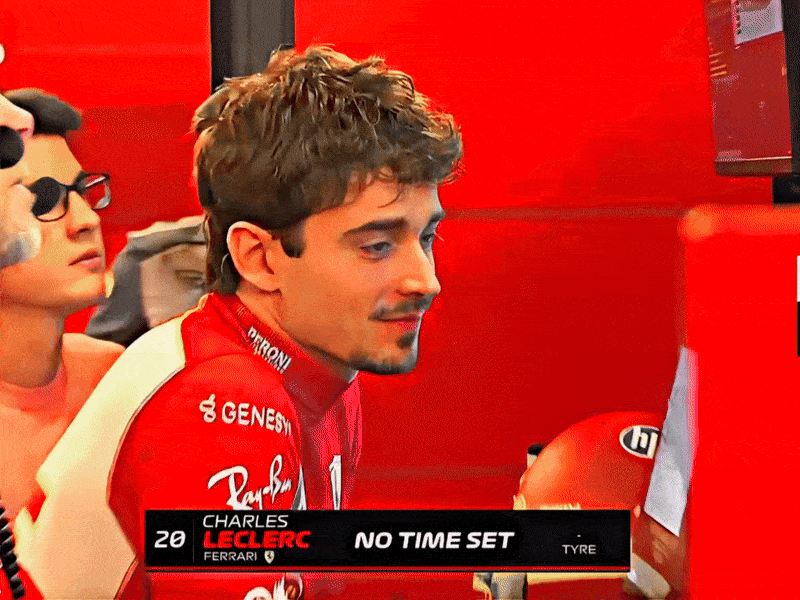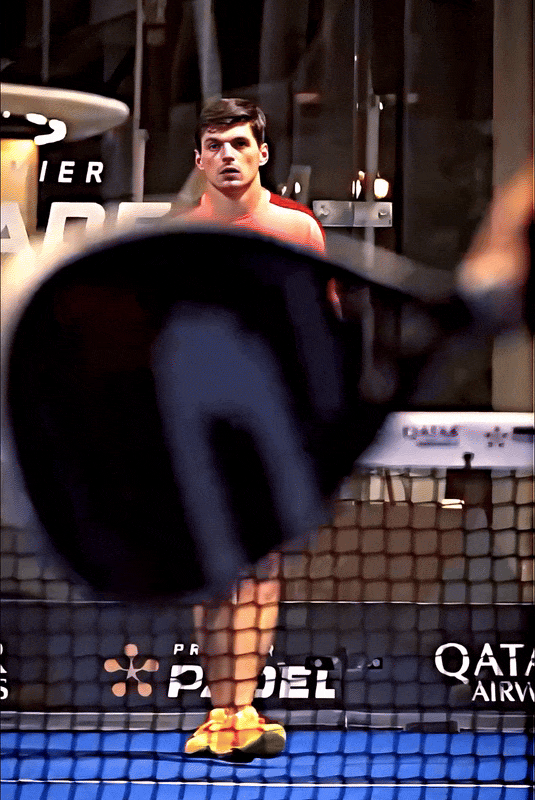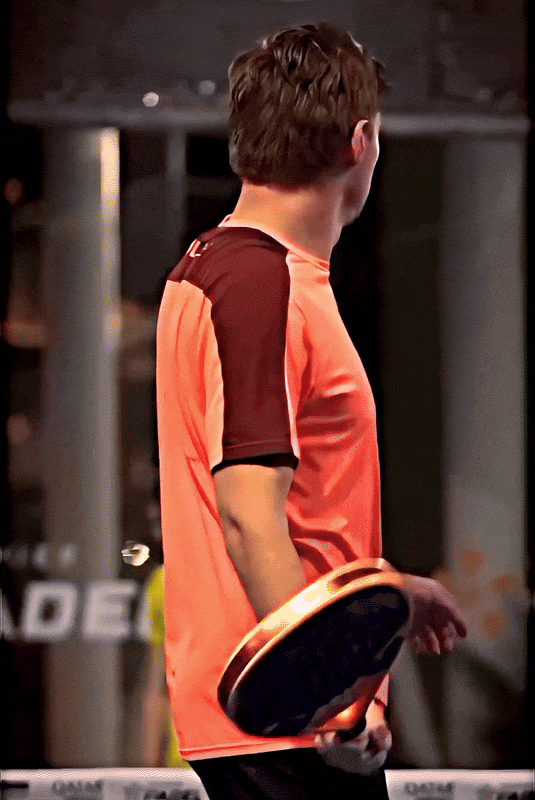Diving deep into Formula 1’s biggest questions and moments. Essays, insights, and debates from the paddock to the podium.
Don't wanna be here? Send us removal request.
Text
WAKE UP EVERYONE MAX VERSTAPPEN IS GOING TO BE A FATHER ‼️‼️‼️‼️

154 notes
·
View notes
Text



Charles watching Arthur drive the car while waiting for his own to be fixed is the cutest proud brother moment
#charles leclerc#arthur leclerc#f1#formula 1#abu dhabi gp 2024#formula one#max verstappen#lewis hamilton#red bull f1
501 notes
·
View notes
Text
charles and lewis during the sprint
2K notes
·
View notes
Text

What Did McLaren Do Wrong in the 2024 season?
Main post!
The 2024 Formula 1 season was a pivotal year for McLaren. Their remarkable progress since the middle of 2023 had placed them in contention to challenge Red Bull's dominance. However, McLaren fell short of expectations despite strong performances and multiple podiums. The team should have capitalized on critical opportunities, faced strategic dilemmas and struggled to balance priorities between their drivers. This post delves into the races where McLaren faltered, compares their 2024 upgrades to their 2023 developments, examines the team’s internal struggles, and suggests solutions for the future.
Key Races Where McLaren Could Have Dominated but Failed
Azerbaijan Grand Prix
McLaren brought a promising package to Baku, a circuit that suited their strong straight-line speed and nimble handling in slow corners. Lando Norris led for much of the race, but a late Safety Car forced the team into a difficult decision. They opted to pit Norris early, leaving him vulnerable to Max Verstappen’s charge on fresher tires. Oscar Piastri, meanwhile, failed to capitalize on the opportunity due to a poor qualifying performance that left him buried in the midfield—the result: a second-place finish for Norris and a missed double podium.
British Grand Prix
Silverstone was a golden opportunity for McLaren, as upgrades brought to this high-speed circuit made their car a serious contender. Lando Norris led for a significant portion of the race, but a misjudged tire strategy saw him stick with medium compounds while rivals switched to softs for the closing laps. Piastri also lost time during a slow pit stop, effectively ending any hopes of a podium finish. Strategic errors prevented the team from securing a home victory and maximizing points.
Japanese Grand Prix
Suzuka highlighted McLaren's lack of adaptability to changing race conditions. Despite their car being the fastest over a single lap in qualifying, a poor race start for both drivers and a mistimed Virtual Safety Car deployment relegated them to suboptimal positions. The team’s reactive approach left them unable to recover, turning what should have been a double-podium weekend into a fifth and seventh-place finish.
Comparing McLaren’s 2024 Upgrades to Their 2023 Improvements
McLaren’s mid-2023 upgrades marked a turning point for the team, as they transformed from a struggling midfield contender into a regular podium threat. The aerodynamic overhaul in mid-2023 focused on improving efficiency, top speed, and balance in high-speed corners, helping the team secure podiums late in the season.
In 2024, McLaren continued to build on this momentum, introducing significant upgrades to optimize downforce generation and tire management. The new floor and sidepod designs for 2024 enhanced the car's cornering ability and improved its performance on slower circuits like Monaco and Singapore. Additionally, updates to the suspension system made the car more predictable over long stints, addressing one of their weaknesses from 2023.
Despite these improvements, McLaren struggled to replicate the transformative effect of their 2023 upgrades. The key difference lies in the inconsistency of their 2024 package across different tracks. While the car excelled on high-speed circuits like Silverstone and Suzuka, it underperformed on circuits requiring high braking efficiency and mechanical grip, such as Canada and Hungary. This variability highlighted a lack of refinement in their upgrade philosophy, leaving gaps for rivals to exploit.
Struggles with Prioritizing Lando’s Championship Bid
A major challenge for McLaren in 2024 was deciding whether to fully back Lando Norris in his fight for the Drivers' Championship. As Norris emerged as a consistent challenger to Max Verstappen, the team was often torn between prioritizing him and developing Oscar Piastri into a formidable second driver.
McLaren occasionally leaned into favouring Norris, implementing team orders that hindered Piastri’s progress. However, this created tension within the team, as Piastri’s strong performances in the second half of the season made him less willing to play a supporting role. The result was disjointed race strategies that compromised both drivers at critical moments. For instance, at the Dutch Grand Prix, an indecisive pit call saw both drivers lose track position, costing the team valuable points.
Additionally, McLaren’s hesitancy to fully commit to Norris often left him at a disadvantage against Verstappen, who benefitted from Red Bull’s unwavering support. By trying to strike a balance, McLaren undermined their ability to mount a serious championship challenge.
How McLaren Can Fix These Issues in the Future
1. Refined Strategic Decision-Making
McLaren must address their recurring strategic missteps. This involves improving real-time decision-making and simulation models to better predict race scenarios. Hiring experienced strategists or consultants with a proven track record in championship campaigns could also help.
2. Clear Hierarchy Between Drivers
To avoid further internal conflicts, McLaren must establish a clear pecking order between Norris and Piastri. If Norris remains their best chance for a championship, the team must make this explicit while simultaneously ensuring Piastri feels valued as a long-term prospect. Transparent communication and equitable treatment in non-critical situations will help foster team harmony.
3. Focused Upgrade Path
McLaren should focus on developing a car that is consistently competitive across a broader range of circuits. This involves refining their aerodynamic philosophy to improve performance on slower tracks without sacrificing their high-speed advantage. Lessons from 2024 must inform a more cohesive upgrade strategy for 2025.
4. Improved Tire Management
The team must invest in tire management technologies and methodologies. Data from 2024 revealed a tendency to overwork the tires on high-degradation circuits, which cost them crucial positions late in races.
5. Enhanced Race Starts
Both drivers struggled with race starts in 2024, particularly on circuits like Japan and Hungary. McLaren must work on optimizing clutch control and launch procedures to avoid losing valuable track positions at the start of races.
6. Commitment to Championship Goals
Finally, McLaren must decide early in the season whether to prioritize the Drivers’ or Constructors’ Championship. Clear goals will help align the team’s efforts and prevent indecision from sabotaging critical moments.
McLaren’s 2024 season was a story of progress but also of missed opportunities. While the team made significant strides forward, strategic errors, inconsistent upgrades, and internal dilemmas prevented them from realizing their full potential. To dominate in the future, McLaren must adopt a more focused approach, streamline their decision-making processes, and back their lead driver when the stakes are high. With the right adjustments, there’s every reason to believe McLaren can emerge as a championship-winning team in the seasons to come.
Please don’t copy my work🙏

#mclaren formula 1#formula 1#max verstappen#red bull f1#landoscar#lando norris#oscar piastri#mcl38#f1 2024#zak brown#f1#red bull racing#formula one#charles leclerc#ferrari#mercedes amg f1#lewis hamilton
21 notes
·
View notes
Text



he's such a proud dad
5K notes
·
View notes
Text



MAX VERSTAPPEN IS A 4TH TIME WORLD CHAMPION
2K notes
·
View notes
Text

🏆 2024 - Fourth Time's the Charm
Main post! 2020 2021 2022 2023
By 2024, Max Verstappen had firmly established himself as the benchmark in Formula 1, consistently outperforming his rivals and teammates. The season reflected Red Bull Racing’s continued excellence with the RB20, an evolution of the team’s already dominant platform. Let’s break down Verstappen’s success and its context in the wider competition.
Team Comparisons
Red Bull (Verstappen vs. Pérez) Verstappen’s superior adaptability to the RB20 was evident. While Sergio Pérez had moments of brilliance, his inability to match Verstappen’s consistency—particularly on high-speed circuits—left him as a supporting player rather than a challenger. Verstappen extracted peak performance from the RB20 in all conditions, benefiting from its improved aerodynamics and unmatched rear stability.
McLaren McLaren emerged as Red Bull’s closest competitor, thanks to major mid-season updates to the MCL60 that improved its cornering speed and tire degradation. Lando Norris displayed remarkable pace, particularly at the British and Singapore GPs, where his high-pressure battles with Verstappen proved thrilling. However, McLaren’s car lacked the versatility of the RB20, making them competitive only on certain tracks.
Ferrari Ferrari began the season with high hopes, but the SF-24 struggled with race pace and tire management, especially on high-degradation tracks. Charles Leclerc, while quick over one lap, couldn’t consistently challenge Verstappen on Sundays. Ferrari’s strategy missteps, reminiscent of past seasons, further compounded their struggles.
Mercedes Mercedes found itself grappling with an inconsistent W15. George Russell showed flashes of competitiveness, while Lewis Hamilton’s vast experience allowed him to extract results from a sub-optimal car. Despite their collective efforts, neither driver posed a serious threat to Verstappen.
Driver Comparisons and Defining Races
Saudi Arabian GP Verstappen’s victory in Jeddah demonstrated his tactical acumen and ability to withstand pressure. Facing stiff challenges from Norris and Leclerc, Verstappen’s precise defensive driving and superior race pace were critical.
British GP Lando Norris pushed Verstappen to the limit in a wheel-to-wheel battle at Silverstone. Verstappen’s ability to maintain composure under relentless pressure highlighted his mental resilience and racecraft.
Singapore GP Starting outside the top 10 due to a rare qualifying mishap, Verstappen climbed through the field to secure a podium. This race exemplified his calculated aggression and Red Bull’s race-day adaptability.
Sao Paulo Outlier
Alpine’s 2024 season exemplified the extremes of Formula 1 performance variability. Despite a largely disappointing year, the team achieved a remarkable breakthrough in one standout event—widely referred to as the “Sao Paulo outlier.” This race showcased a perfect storm of favorable conditions, from strategic brilliance to driver execution, allowing Alpine to capitalize on the unique circumstances. The event highlighted flaws in the Constructors' Championship structure, where a single exceptional result could disproportionately affect standings. This anomaly has reignited debates on the fairness and consistency of F1’s points system, with calls for revisions to better reflect team performance across an entire season.
Williams Fiasco
Logan Sargeant’s struggles at Williams culminated in his mid-season replacement by Franco Colapinto, an Argentine driver making history as the first from his country to compete in F1 since Gastón Mazzacane. Sargeant’s inconsistent performances, particularly in race craft and qualifying, left Williams seeking a more reliable talent. Colapinto, highly rated for his feeder series successes, brought renewed energy to the team and quickly demonstrated his potential with solid results. This transition symbolized the high-stakes nature of F1, where even slight underperformance can lead to drastic career changes.
📈 The Formula for Success
What changed after 2020? Red Bull and Verstappen identified their weaknesses and turned them into strengths. The cars became more reliable, faster, and easier to handle across varying conditions. Verstappen matured as a driver, evolving from a hot-headed talent into a calculated and relentless competitor. Perhaps most crucially, Red Bull’s strategic brilliance on the pit wall often outmanoeuvred competitors, ensuring they made the most of their opportunities. Max Verstappen’s dominance is a testament to hard work, adaptability, and the relentless pursuit of perfection. His story continues to inspire and redefine what it means to be a Formula 1 champion.
Max Verstappen’s 2024 season was the culmination of talent, engineering excellence, and strategic mastery. By continuously evolving and learning from past challenges, Verstappen and Red Bull set a new standard in modern Formula 1.
Future changes may be made to this post depending on how Qatar and AbuDhabi GPs turn out.
Please don’t copy my work🙏

#alpine#estaban ocon#redbull racing#max verstappen#sergio checo pérez#sergio perez#williams racing#franco colapinto#logan sargeant#ferrari#mclaren#lando norris#oscar piastri#charles leclerc#carlos sainz#lewis hamilton#george russell#rb20#mcl60#sf24#formula 1 2024#formula 1#formula one#mercedes amg petronas#f1 2024
19 notes
·
View notes
Text

🏆 2023 - Mastering Consistency
Main post! 2020 2021 2022 2024
The 2023 Formula 1 season was evidence of Max Verstappen’s dominance, he was often described as being ‘in a league of his own’, with his performance defining new standards of excellence. Verstappen secured a record-breaking 17 victories, eclipsing his own 2022 record of 15 wins, and led Red Bull Racing to historic achievements, including the team’s unprecedented 12th consecutive victory at the Hungarian GP.
Verstappen vs. Perez
The teammate comparison was stark: Verstappen comprehensively outperformed Sergio Pérez in both qualifying and race pace, with a 20-2 head-to-head victory in qualifying and the same record in races where both drivers finished. Verstappen’s adaptability to different circuits and conditions contrasted sharply with Pérez’s struggles to extract consistent performance, especially as the season progressed. Pérez’s drop in form highlighted Verstappen’s unparalleled ability to maximise the RB19’s potential.
Key Rivals and Their Challenges
While Verstappen was in a league of his own, rivals like Ferrari, Mercedes, and Aston Martin had moments of brilliance but lacked the consistency or outright pace to challenge him. Ferrari, with Charles Leclerc and Carlos Sainz, showed flashes of speed but struggled with strategic missteps and tire degradation issues. Mercedes, led by Lewis Hamilton and George Russell, made strides late in the season but were hampered by their car’s performance deficit in high-speed circuits.
Aston Martin’s early-season success with Fernando Alonso brought intrigue, but the team’s development curve flattened, leaving Alonso unable to sustain his podium streak. Verstappen’s ability to maintain dominance across various track layouts and weather conditions showcased his superiority over these rivals.
Why Other Teams Fell Behind
Red Bull’s dominance in 2023 stemmed from a combination of factors, including the RB19’s exceptional aerodynamic efficiency, superior tire management, and a significant advantage in high-speed cornering. These attributes were the result of Adrian Newey’s design brilliance and the team’s seamless execution of strategies. Other teams struggled to keep pace due to various shortcomings: Ferrari faced reliability concerns and poor tire degradation; Mercedes grappled with the W14’s unpredictable aerodynamics, particularly in low-speed corners; and Aston Martin’s rapid early-season performance stagnated as the team failed to bring effective mid-season upgrades.
A significant factor was Red Bull’s head start with the new regulations in 2022. The team carried forward a strong development baseline while others were still learning to optimize their cars under the ground-effect era. Additionally, the cost cap limited teams’ ability to recover quickly, widening the performance gap.
McLaren’s Resurgence and Limitations
McLaren stood out as one of the few teams to make noticeable progress mid-season. After a lackluster start, a comprehensive upgrade package introduced around the Austrian GP transformed the MCL60, with Lando Norris and Oscar Piastri emerging as podium contenders. McLaren’s improved aerodynamic package emphasized cornering performance, making them particularly strong at high-downforce circuits like Suzuka and Singapore.
However, McLaren’s resurgence had limitations. The RB19 remained unmatched in its versatility, excelling on tracks with diverse layouts and weather conditions. McLaren’s reliance on specific track characteristics and its late start to the season's development race meant it could not challenge Red Bull consistently. Furthermore, Red Bull’s operational precision, Verstappen’s brilliance, and the RB19’s all-round superiority created a gap that upgrades alone could not bridge. McLaren’s progress highlighted what was possible with effective updates but also underscored the importance of starting strong in F1’s ultra-competitive environment.
This juxtaposition illustrated the chasm Red Bull had created—an advantage too vast for even the most well-executed recovery to overcome in 2023.
Highlights of the Season
Miami GP: Starting ninth, Verstappen’s strategic tire management and overtaking prowess led to a spectacular victory, exemplifying his ability to recover from setbacks.
Monaco GP: In treacherous, wet conditions, Verstappen’s control underlined his mastery in one of F1’s most demanding races.
Hungarian GP: His win here secured Red Bull’s record-breaking 12th consecutive victory, cementing their status as one of F1’s greatest teams.
Comparing Verstappen to F1’s Legends
Verstappen’s dominance in 2023 invited comparisons to F1’s greatest seasons, with pundits likening his control to that of Michael Schumacher in 2004 or Sebastian Vettel in 2013. However, Verstappen’s ability to thrive under pressure and adapt to a wide range of challenges set him apart, solidifying his place as one of the sport’s all-time greats.
The RB19’s unparalleled performance and Verstappen’s brilliance elevated Red Bull Racing to a nearly untouchable position in the championship standings. By the season’s end, Verstappen’s relentless consistency and unmatched racecraft ensured personal glory and a legacy-defining year for the team.
Please don’t copy my work🙏

#red bull racing#redbull racing#red bull f1#red bull formula 1#red bull formula one#formula one#formula 1 2023#f1 2023#hungarian gp 2023#sebastian vettel#michael schumacher#sergio perez#sergio checo pérez#rb19#miami gp 2023#monaco gp 2023#f1 legends#mclaren f1#mclaren formula 1#ln4#andrea stella#mclaren#lando norris#landoscar#oscar piastri#w14#mercedes#mercedes amg f1#mercedes f1#MCL60
15 notes
·
View notes
Text

🏆 2022 - Total Domination
Main post! 2020 2021 2023 2024
The 2022 Formula 1 season marked a new era, with a major overhaul of technical regulations aimed at promoting closer racing. This reset the playing field, offering teams a fresh opportunity to innovate. Red Bull Racing, led by Adrian Newey, rose to the challenge, producing the formidable RB18. Coupled with Max Verstappen’s flawless driving, this season became a showcase of dominance.
The RB18: A Technical Masterpiece
The RB18 exemplified a well-rounded approach to the new regulations. Red Bull’s design prioritized aerodynamic efficiency and straight-line speed, leveraging ground effect to its fullest potential. While Ferrari initially appeared to match Red Bull’s pace with their F1-75, the RB18’s superior tire management and adaptability across a variety of circuits gave Verstappen a decisive edge.
Verstappen’s teammate, Sergio Pérez, had a strong start to the season, including a victory in Monaco. However, as the car's development evolved to suit Verstappen’s driving style—favoring a sharper front end and a more oversteer-prone setup—Pérez’s competitiveness waned. By mid-season, Verstappen consistently outperformed his teammate, securing Red Bull’s position at the top of both championships.
A Rocky Start and Turning Point
Verstappen’s season began with challenges. Retirements in Bahrain (fuel pump issue) and Australia (fuel system failure) put him on the back foot while Ferrari’s Charles Leclerc surged ahead. However, the Emilia Romagna Grand Prix at Imola marked a critical turning point. Verstappen’s Grand Slam (pole, sprint win, fastest lap, and race victory) underscored Red Bull’s growing superiority. This performance set the tone for the remainder of the season.
Key Races: Moments of Dominance
Spanish GP: Verstappen’s resilience was on display as he overcame early issues, including a trip into the gravel and DRS failures, to secure victory. Red Bull’s superior strategy and teamwork helped Verstappen capitalize on Ferrari’s errors, including Leclerc’s untimely engine failure.
Belgian GP: Starting 14th due to power unit penalties, Verstappen delivered one of the most dominant performances of the modern era. He scythed through the field with remarkable efficiency, taking the lead by Lap 12 and winning by over 17 seconds. This race highlighted not only the RB18’s straight-line speed but Verstappen’s ability to extract maximum performance in any scenario.
Japanese GP: In chaotic, rain-soaked conditions, Verstappen claimed victory and sealed the championship with four races to spare. His mastery of wet-weather racing and the RB18’s balance shone through, while Ferrari struggled with operational missteps.
Championship Sealed in Japan
Verstappen clinched his second World Championship at Suzuka under controversial and chaotic circumstances. The race, shortened by torrential rain, was initially unclear in awarding full points. However, a stellar performance by Verstappen—dominating the event despite the challenging conditions—left no doubt about his superiority.
Comparison with Ferrari and Mercedes
Ferrari: Initially the only team capable of challenging Red Bull, Ferrari’s title bid was undone by reliability issues (e.g., power unit failures in Baku and Spain), driver errors, and questionable strategic calls. Charles Leclerc, while often fast in qualifying, struggled to maintain consistency over the race distance, particularly against Verstappen’s superior tire management.
Mercedes: The W13 was plagued by porpoising early in the season, leaving them unable to challenge consistently. Despite significant progress by the season’s end, exemplified by George Russell’s win in Brazil, Mercedes were not in contention for most of the year.
Teammate Comparison: Verstappen vs. Pérez
While Sergio Pérez played a crucial role in Red Bull’s Constructors’ Championship, his performance paled in comparison to Verstappen’s. Pérez excelled in street circuits (e.g., Monaco win) and defensive driving (notably in Abu Dhabi 2021), but his pace and consistency diminished as Red Bull tailored the RB18’s development toward Verstappen’s preferences. Verstappen ended the season with 15 wins compared to Pérez’s 2, a stark indicator of the gap between the two drivers.
Why Verstappen Excelled
Technical Prowess of the RB18: The car excelled across diverse circuits, from the high-speed straights of Monza to the tight corners of Monaco.
Driver Adaptability: Verstappen adjusted to the ground-effect regulations and developed a driving style that maximised the RB18’s potential.
Tire Management: The car’s efficiency allowed Verstappen to push when needed while preserving tires in key stints.
Strategic Excellence: Red Bull's pit wall consistently outmanoeuvred competitors, ensuring Verstappen was always in a position to maximize points.
Legacy of the 2022 Season
By the season’s end, Verstappen had shattered records, including the most wins in a single season (15)—breaking the previous record held by Michael Schumacher and Sebastian Vettel—and the most points scored (454). This year was defined less by head-to-head battles and more by an exhibition of excellence. Verstappen and Red Bull operated in near-perfect harmony, leaving rivals far behind and setting a new benchmark for dominance in modern Formula 1.
Please don’t copy my work🙏

#max verstappen#sergio perez#sergio checo pérez#red bull racing#red bull formula 1#red bull f1#formula 1#formula one#formula 1 2022#f1 2022
10 notes
·
View notes
Text

🏆 2021 - The Epic Duel
Main post! 2020 2022 2023 2024
The 2021 Formula 1 season is heralded as one of the most thrilling in the sport’s history, defined by a fierce rivalry between Max Verstappen and Lewis Hamilton that captivated fans worldwide. With two drivers of unparalleled skill and teams operating at their peak, the battle for the championship was one of fine margins, controversial moments, and pure racing brilliance.
Opening Shots: Bahrain and the Early Season
The tone for 2021 was set in Bahrain, where Verstappen's early overtaking brilliance was undone by a track limits violation that handed Hamilton the victory. From the outset, Red Bull’s RB16B appeared more competitive than previous iterations, offering Verstappen a legitimate chance to challenge Mercedes’ dominance. By the Emilia Romagna Grand Prix, Verstappen struck back, outdueling Hamilton in tricky wet-dry conditions to claim his first win of the season. The tit-for-tat nature of their rivalry continued through the early rounds, including the Portuguese and Spanish Grands Prix, where Hamilton's racecraft kept him in contention despite Red Bull's improving pace.
Momentum Swings: Monaco to France
The Monaco GP was pivotal for Verstappen. With Hamilton finishing seventh, Verstappen’s victory not only showcased his mastery of technical circuits but also handed him the championship lead for the first time in his career. This momentum carried forward, as Red Bull secured consecutive wins in Azerbaijan (despite Verstappen's heartbreaking tire failure) and France, where Verstappen executed a daring two-stop strategy to snatch victory from Hamilton late in the race.
Flashpoints and Drama: Silverstone to Monza
The rivalry reached a boiling point at Silverstone. In a dramatic first-lap duel, Hamilton and Verstappen collided, sending Verstappen into the barriers with a 51G impact. Hamilton recovered from a penalty to win, igniting a war of words between the two camps. The tension was palpable by the Italian Grand Prix in Monza, where another collision saw both drivers crash out after Verstappen’s car landed atop Hamilton’s, with Verstappen receiving a grid penalty for the next race.
Verstappen’s Consistency and Zandvoort Glory
Amid the chaos, Verstappen showcased remarkable consistency. His win at Zandvoort, in front of a sea of orange-clad fans, highlighted his composure under immense pressure. Victories in Mexico and the United States further solidified his championship credentials, keeping him just ahead of Hamilton as the season hurtled toward its conclusion.
The Abu Dhabi Finale
The Abu Dhabi GP will forever be remembered as one of the most contentious finales in sporting history. Entering the race tied on points, the title battle came down to the final lap. A controversial decision to restart the race after a late safety car allowed Verstappen, on fresher tires, to overtake Hamilton and secure his maiden championship. While the FIA's handling of the incident drew criticism, Verstappen’s racecraft in capitalizing on the opportunity cemented his place in history.
Legacy of 2021
With 10 wins, 18 podiums, and a season of unrelenting aggression, Verstappen’s 2021 campaign was a testament to his evolution as a complete driver. It marked the end of Mercedes’ dominance and established Verstappen as a generational talent poised for future glory. The season, though controversial, rejuvenated F1’s global appeal and is now etched as a classic in the sport's history.
Please don’t copy my work🙏

#max verstappen#lewis hamilton#formula 1#formula one#mercedes amg f1#red bull racing#red bull formula 1#red bull f1#formula 1 2021#f1 2021
11 notes
·
View notes
Text






Max playing padel in Qatar, 26.11.24
468 notes
·
View notes
Text

🏎️ Why Couldn't Verstappen Win the WC in 2020?
Main post! 2021 2022 2023 2024
The 2020 Season
Max Verstappen's journey to becoming a four-time Formula 1 World Champion (as of 2024) has been nothing short of remarkable. Each season brought unique challenges and triumphs that showcased his talent and Red Bull Racing's prowess. Let’s delve into how the 2020 championship slipped through his grasp before his great success!
The 2020 Formula 1 season was a significant turning point for Max Verstappen, despite the insurmountable dominance of Mercedes and Lewis Hamilton. Verstappen’s skill and determination shone through the challenges posed by the superior W11 car, widely considered one of the greatest machines in F1 history. Mercedes excelled across all metrics: power, aerodynamics, and reliability, with Hamilton taking 11 victories and teammate Valtteri Bottas adding two more. This left only two wins for Verstappen in a season where Red Bull's RB16 struggled to compete consistently at the top.
Red Bull RB16’s Struggles
The RB16 demonstrated promising peak performance but suffered from instability and inconsistency, especially in handling low-speed corners. Straight-line speed deficits also hindered Red Bull's challenge against the mighty Mercedes. Furthermore, the car’s setup was notoriously tricky, making it difficult for Verstappen’s teammate Alexander Albon to contribute meaningfully to the team's Constructors’ Championship battle. Red Bull’s car development pattern—traditionally finding performance gains later in the season—also played a role. By the time the RB16 became more competitive, Mercedes had already sealed the championship titles.
Reliability Woes
Reliability was a significant weakness for Verstappen in 2020. Mechanical issues led to costly DNFs at the Tuscan Grand Prix (collision) and the Emilia Romagna Grand Prix (tyre failure), among others. These setbacks prevented Verstappen from consistently capitalizing on opportunities, leaving him further behind in the title fight.
Standout Performances
Despite these challenges, Verstappen’s talent was evident in his standout performances. His victory at the 70th Anniversary Grand Prix at Silverstone came through clever tyre management, as he capitalized on Mercedes' struggles with blistering in high temperatures. Similarly, his dominant win at the Abu Dhabi Grand Prix, the season finale, showcased Red Bull’s improvement and Verstappen’s ability to execute a perfect race when given the right tools.
Lessons for 2021
The struggles of 2020 laid the groundwork for Verstappen’s eventual success. Red Bull’s understanding of the RB16’s weaknesses informed the development of the RB16B for 2021, which proved capable of matching Mercedes on more occasions. Verstappen’s experiences from 2020 also helped him mature as a driver, improving his consistency and adaptability, setting the stage for his first championship-winning campaign.
2020 was not just a season of lost opportunities for Verstappen but a critical learning curve that prepared him for the fierce title battle to come.
Please don’t copy my work🙏

#max verstappen#lewis hamilton#formula 1#formula one#red bull racing#red bull f1#mercedes amg f1#sir lewis hamilton#mercedes f1#ferrari#alex albon#f1 2020
10 notes
·
View notes
Text
Max Verstappen you are a 4-time World Champion!
That is 4 in a row 🦁 absolute legend 🌟
23 notes
·
View notes
Text








Lewis Hamilton on one-on-one astronaut training with John “Slick” Baum.
Via IWC Watches
25 notes
·
View notes
Text




Charles Leclerc and Lewis Hamilton in the paddock, 21.11.24 - Las Vegas GP 2024
490 notes
·
View notes
Text

Welcome to My Formula 1 Blog!
Hi everybody! A little bit about me while I prepare my first report! I don’t feel comfortable sharing my real name so just call me Ana (short for analysis). I’m straight (she/her). I’m Eastern European, more specifically from Hungary!
As Formula 1 is huge in Europe, despite me being born in Australia, because of my European parents I grew up with F1! So I’ve been watching Formula 1 for years and years. My dream is to one day be a F1 Race Engineer, I’m currently studying Mechanical Engineering!!
My favourite driver of all time is Kimi Räikkönen The Iceman he’s an absolute legend! And I love how much we can see of him in Piastri. As I do have family in Italy going for Ferrari was only natural, it’s a shame that Vettel didn’t get a chance to win a championship in the legendary Ferrari but it is what it is!
If you have any questions I’m happy to chat! Mwah💋!
This blog is dedicated to exploring the world of Formula 1 through in-depth reports and analyses. From championship-winning strategies to the dynamics of individual drivers and teams, my goal is to provide unique insights and thought-provoking discussions about the sport we all love.
Whether you're a die-hard fan or just starting to learn about F1, you'll find content here that dives into the complexities of racing, from technical nuances to human stories behind the wheel.
Don’t be shy to message and leave suggestions for future posts!
Key Posts
Below are links to some posts I hope you enjoy!:
How Max Verstappen Won Each Championship from 2021 and Onwards (links coming soon) 5 parts
2020 2021 2022 2023 2024
What Did Lando Do Wrong in 2024? (In editing thank you for those that helped realise my mistakes🫶)
What Did McLaren Do Wrong in 2024?
What’s the Difference Between Franco Colapinto and Logan Sargeant? (link coming soon)
Why is the Gap Between Sergio Perez and Max Verstappen So Large? (link coming soon)
What Can Be Expected of Formula 1’s New 11th Team? (link coming soon)
How Can Lando Norris Challenge Max Verstappen More in the 2025 Season? (link coming soon)
The Waste of Valtteri Bottas’ Potential. (link coming soon)
The Math Behind Formula 1 (link coming soon)
Feel free to explore, share your thoughts, and suggest future topics. Let’s delve into Formula 1 together!
PLEASE DONT COPY MY WORK!!
#formula 1#formula one#red bull racing#red bull formula 1#red bull f1#ferrari f1#redbull racing#max verstappen#franco colapinto#logan sargeant#sergio perez#sergio checo pérez#formula 1 2024#formula 1 2025#mclaren f1#oscar piastri#worldchampion#f1#f1 blog#formula 1 content#lewis hamilton#charles leclerc#lando norris#alex albon#liam lawson#f1 2024#andrea stella#mclaren formula 1
17 notes
·
View notes







